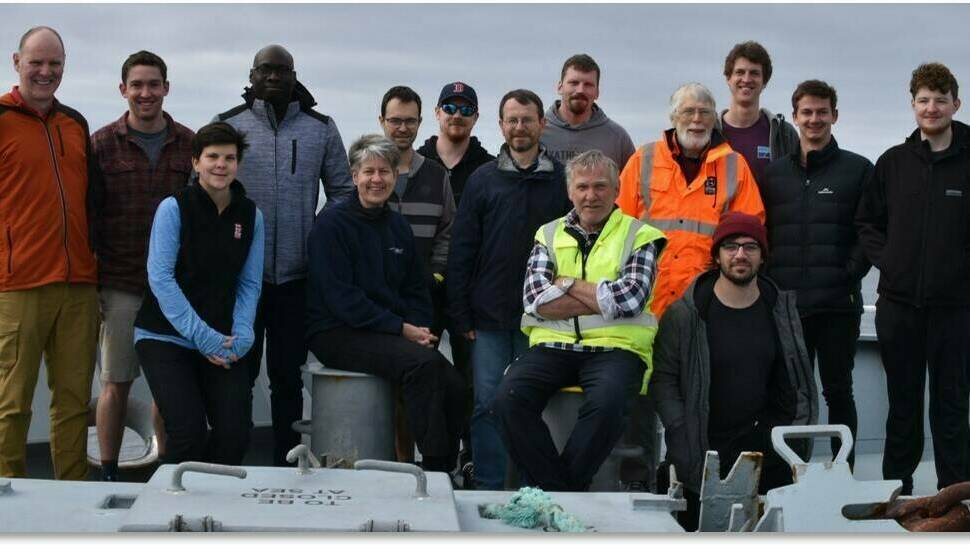Geologic Champagne: What controls sudden release of CO2 at glacial terminations on the Chatham Rise?
One of the challenges in ocean and climate science is learning what earth system processes contributed to variations in atmospheric carbon dioxide (CO2) that accompanied past glacial terminations. GNS Science is testing the hypothesis that CO2 is accumulated in geological reservoirs during interglacial periods and released at the end of glacial cycles as sea level rise.

Background
GNS Science has developed a novel hypothesis linking a regulatory mechanism for carbon dioxide (CO2) concentration in the atmosphere to release of geologic CO2.
The Chatham Rise, offshore from Aotearoa New Zealand, appears to be a 'smoking gun' for this mechanism. The evidence is sharp carbon and boron isotope anomalies observed in sediment cores at the end of the last glacial termination. The CO2 is likely to originate in limestone sequences of the subducted Hikurangi Plateau, a large igneous province, which subsequently migrates upwards towards the seafloor.
The mechanism that controls the release of CO2 at the end of glaciations is still unclear. Abundant seafloor pockmarks found on the Chatham Rise appear to have formed during glacial terminations. Formation of seafloor pockmarks is often attributed to sudden release of fluids forming craters.
GNS hypothesises these pockmarks may act as 'valves' for the sudden release of CO2 after being accumulated during interglacial periods. This could explain one of the most puzzling mechanisms for regulation of CO2 in the late Pleistocene era.
Collaborators include the University of Auckland, Texas A&M University, and the University of Southern California.
Project details
This project is focused on acquiring geophysical datasets in a region of densely spaced, small pockmarks on the Chatham Rise. These include seismic, sub-bottom profiler and multibeam bathymetry datasets.
The images show an example of the sub-bottom profiler data showing the pockmarks at the present day seafloor, and paleo-pockmarks buried beneath the surface; the science crew of voyage TAN2006 on the research vessel Tangaroa; and the underwater acoustics lab on Tangaroa.
What they hope to achieve
These new data will allow GNS to investigate the mechanism responsible for the formation of these pockmarks and determine whether the timing of their formation correlates with past glacial-interglacial cycles. These data will also form the basis of an Integrated Ocean Drilling Program (IODP) proposal for further exploration in this region.

Resource



